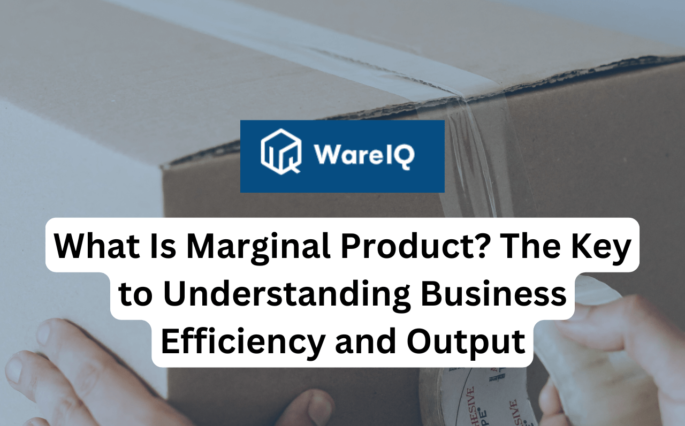How Is Swiggy Instamart Redefining Quick Commerce?

The advent of quick commerce, or q-commerce, is revolutionizing the retail and delivery sectors, promising unprecedented speed and convenience. Among the pioneers in this rapidly evolving landscape is Swiggy Instamart, a service that has significantly altered how consumers access everyday essentials. As traditional e-commerce models strive to shorten delivery times, Swiggy Instamart stands out by offering ultra-fast delivery, typically within 15 to 30 minutes. This shift is not merely a trend but a response to growing consumer demand for instant gratification and the need for businesses to adapt to increasingly dynamic market conditions.
In this article, we will explore Swiggy Instamart’s strategy for redefining quick commerce, the differences between q-commerce and traditional e-commerce, and the broader implications of this shift for the retail industry. By examining Swiggy Instamart’s approach and the quick commerce model in detail, we aim to provide a comprehensive understanding of this transformative trend.
What Is Swiggy Instamart?
Swiggy Instamart is an on-demand grocery delivery service launched by Swiggy, one of India’s leading food delivery platforms. Introduced to meet the growing demand for quick and convenient access to daily essentials, Instamart operates with the promise of delivering groceries and other household items within a remarkably short time frame—often within 15 to 30 minutes.
The service leverages Swiggy’s extensive logistics network and technological capabilities to offer a wide range of products, from fresh produce and dairy to snacks and personal care items. By establishing a network of dark stores—small warehouses close to key residential areas—Swiggy Instamart ensures it can quickly fulfil orders. This model enhances customer satisfaction through rapid delivery and allows Swiggy to capitalise on the growing trend towards quick commerce, positioning itself as a leader in this new retail paradigm.
What Is Quick Commerce?
Quick commerce, or q-commerce, represents the next evolution of e-commerce, focusing on delivering goods to consumers quickly. Unlike traditional e-commerce, which typically offers delivery times ranging from a few days to a week, q-commerce aims to fulfil orders within hours or even minutes. This model relies on technology, local fulfilment centres, and an efficient logistics network to achieve rapid delivery times. Critical components of q-commerce include:
- Dark Stores: Small, strategically located warehouses that stock high-demand items, allowing for quick dispatch.
- Advanced Algorithms: Sophisticated software that optimises order routing and delivery efficiency.
- Local Partnerships: Collaborations with local businesses to expand the range of available products and improve delivery speed.
- Real-Time Inventory Management: Systems that provide up-to-the-minute data on stock levels to prevent delays due to out-of-stock items.
Q-commerce caters to the growing consumer preference for instant gratification, offering unparalleled convenience and setting new standards for the retail industry.
The Strategy of Swiggy Instamart in Redefining Quick Commerce
Swiggy Instamart has adopted several strategic initiatives to redefine quick commerce and set itself apart from competitors. These strategies include:
1. Network of Dark Stores
Swiggy Instamart operates a network of dark stores strategically located in densely populated urban areas. These mini-warehouses stock a curated selection of high-demand products, enabling rapid order fulfilment.
2. Efficient Logistics and Routing
Using advanced algorithms and AI-driven logistics, Swiggy optimises delivery routes to ensure the fastest delivery times. This includes real-time tracking and dynamic route adjustments to circumvent traffic and other delays.
3. Broad Product Range
Instamart offers a comprehensive range of products, including fresh produce, dairy, packaged foods, and personal care items. This extensive selection ensures that customers can find everything they need in one place, enhancing convenience.
4. Customer-Centric Approach
Swiggy Instamart prioritises customer satisfaction by ensuring high service quality, maintaining consistent product availability, and offering competitive pricing. Regular feedback collection and analysis help refine their service offerings.
5. Technological Integration
Leveraging Swiggy’s existing technological infrastructure, Instamart integrates seamlessly with the main Swiggy app, providing users with a familiar and user-friendly interface. This integration simplifies the ordering process and ensures a smooth customer experience.
6. Strategic Partnerships
Collaborations with local vendors and suppliers help Instamart maintain a steady supply chain and expand its product range, catering to diverse customer needs.
Through these strategies, Swiggy Instamart is not just participating in the quick commerce market but actively shaping it, setting new standards for speed, convenience, and customer satisfaction.
Suggested read: Blinkit Case Study and Swiggy Instamart Vs. Zepto
How Quick Commerce Is Different From E-Commerce?
Quick commerce (q-commerce) differs from traditional e-commerce in several fundamental ways:
1. Delivery Time
Q-Commerce: Promises delivery within minutes to a few hours, typically 15-30 minutes.
E-Commerce: Standard delivery times range from a few days to a week.
2. Fulfillment Centers
Q-Commerce: Relies on dark stores or micro-fulfillment centers close to customer hubs.
E-Commerce: Utilizes large, centralised warehouses, often located on the outskirts of cities.
3. Product Range
Q-Commerce: Focuses on high-demand, everyday essentials like groceries, snacks, and personal care items.
E-Commerce: Offers a broader range of products, including electronics, apparel, and home goods.
4. Order Size
Q-Commerce: Typically involves smaller, more frequent orders.
E-Commerce: Often handles larger orders with higher ticket values.
5. Logistics and Technology
Q-Commerce: Employs advanced algorithms for real-time inventory management and route optimisation to ensure fast delivery.
E-Commerce: Uses traditional logistics models with scheduled delivery windows.
6. Consumer Behaviour
Q-Commerce: Caters to the need for instant gratification and immediate access to products.
E-Commerce: Focuses on planned purchases and the convenience of shopping from home.
These differences highlight how q-commerce is carving out a niche within the broader e-commerce ecosystem, catering to evolving consumer demands for speed and convenience.
What solution does WareIQ offer for efficient inventory management in quick commerce?
WareIQ’s fulfillment solution allows you to regionally place your inventory to fulfill purchase orders from Blinkit, Zepto, and Swiggy Instamart with a fully compliant solution. Drive frequent replenishments to multiple dark stores, on schedule and with Proof of Delivery.
Our solution includes:
- Local Fulfillment Centers: Our pan-India network of fulfillment centers function as feeder warehouses to send inventory on time to Blinkit, Zepto, and Instamart dark stores
- PO Creation & Management Platform: Our platform integrates with your OMS/WMS/ERP to get all the order data & enables you to create & track POs in real-time
- Trained Operations Team: Our team of seasoned operations experts ensures all your POs are prepared accurately as per SOP and dispatched on time to dark stores
- Delivery as per Appointment: We are integrated with the top courier partners and our team ensures all your POs are dispatched as per appointment taken from dark stores
Want to know more : Check WareIQ’s Quick commerce fulfillment service
Conclusion
Swiggy Instamart is at the forefront of redefining quick commerce, leveraging its robust logistics network, advanced technology, and strategic partnerships to deliver unparalleled speed and convenience. As consumer expectations continue to evolve towards instant gratification, Swiggy Instamart’s innovative approach to rapid delivery of everyday essentials positions it as a leader in the q-commerce space. By understanding and adapting to these changing dynamics, businesses can meet and exceed customer expectations, driving growth and competitive advantage.
In the broader context, the rise of quick commerce represents a significant shift in the retail industry. As more companies adopt q-commerce models, the landscape will evolve, offering new opportunities and challenges. Businesses that embrace these changes and invest in the necessary infrastructure and technology will be well-positioned to thrive in this fast-paced environment.
Suggested read: List of the Top Quick commerce companies in India.
FAQs About Swiggy Instamart
What is Swiggy Instamart?
Swiggy Instamart is an on-demand grocery delivery service by Swiggy, offering rapid delivery of everyday essentials within 15 to 30 minutes, leveraging a network of dark stores and advanced logistics.
How does quick commerce differ from traditional e-commerce?
Quick commerce focuses on delivering goods within minutes to a few hours using local fulfilment centres. In contrast, traditional e-commerce typically involves longer delivery times, ranging from a few days to a week and relies on larger, centralised warehouses.
What strategies does Swiggy Instamart use to ensure fast delivery?
Swiggy Instamart employs strategies such as operating dark stores, using advanced logistics and routing algorithms, maintaining a broad product range, and integrating technology to streamline the ordering process.
Why is quick commerce becoming popular?
Quick commerce is gaining popularity due to increasing consumer demand for instant gratification and the rapid convenience of receiving everyday essentials, which is facilitated by advancements in technology and logistics.
How does Swiggy Instamart integrate with Swiggy’s main app?
Swiggy Instamart integrates seamlessly with the main Swiggy app, providing users with a familiar interface and simplifying the ordering process for groceries and other essentials alongside their usual food delivery orders.
What impact does quick commerce have on traditional retail?
Quick commerce is transforming traditional retail by setting new standards for delivery speed and convenience. It pushes retailers to adapt by adopting faster fulfilment methods and enhancing logistics capabilities.
What is the Swiggy Instamart Franchise?
A Swiggy Instamart franchise allows you to run a quick commerce store offering ultra-fast delivery of daily essentials. It’s part of Swiggy’s rapid delivery service.
Who can be a Swiggy Instamart seller?
A Swiggy Instamart seller is a retailer or business that partners with Swiggy to sell and deliver everyday essentials through their quick commerce platform.








